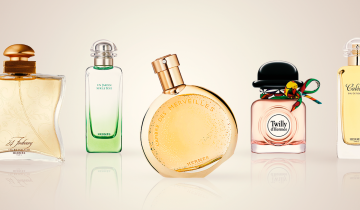Written by Sneha RK
Edited by CHIQIO
Keywords: “perfume bottle design”, “evolution of perfume bottles”, “creative revolution”,”fragrance packaging”, “perfume history”, “luxury perfume bottles”, “artistic perfume bottles”
Meta description: “Explore the captivating evolution of perfume bottle design, from early 20th-century functionality to modern artistic expressions. Discover how cultural shifts, technological advancements, and branding have shaped the aesthetics of perfume packaging.”
Perfume has long been considered a luxury item, not just for its aromatic qualities, but also for its presentation. The bottle that houses a fragrance is often as carefully crafted as the scent itself, serving as both a functional container and a work of art. Over the years, perfume bottle design has undergone a fascinating evolution, reflecting changing tastes, technological
advancements, and cultural shifts. This article explores the journey of perfume bottle design from its early days to the creative explosion we see today.
The Early Days: Functionality Meets Elegance
In the early 20th century, perfume bottles were primarily designed with functionality in mind. Glass was the material of choice, often adorned with simple labels or minimal decorative elements. The focus was on preserving the fragrance and allowing for easy application. However, even in these early designs, there was an emphasis on elegance. Cut glass bottles with intricate stoppers were popular, reflecting the Art Deco aesthetic of the 1920s and 1930s.
The Mid-Century Shift: Branding Takes Center Stage
As the perfume industry grew more competitive in the mid-20th century, bottle design became a crucial element of brand identity. Iconic designs emerged during this period, such as the Chanel No. 5 bottle, which has remained largely unchanged since its introduction in 1921. Its simple, clean lines and minimalist aesthetic set a new standard for modern perfume packaging.
The 1950s and 1960s saw a surge in creativity, with designers pushing the boundaries of what a perfume bottle could be. Shapes became more varied, moving away from traditional cylindrical or rectangular forms. Salvador Dalí’s collaboration with Schiaparelli for the “Le Roy Soleil” perfume in 1946 is a prime example of this creative shift, featuring a bottle that resembled a sun with rays and a face.
The Late 20th Century: A Creative Explosion
The latter part of the 20th century witnessed a true creative revolution in perfume bottle design. Designers began to view the bottle as a canvas for artistic expression, often creating designs that were as much sculpture as they were containers. Jean Paul Gaultier’s iconic torso-shaped bottles for his fragrances, introduced in the 1990s, exemplify this trend. These bottles challenged conventional ideas about perfume packaging and became collector’s items in their own right.
Materials expanded beyond traditional glass, with designers experimenting with metals, ceramics, and even unconventional materials like fabric or leather accents. The bottle became an integral part of the fragrance’s story and identity, often designed to evoke the mood or inspiration behind the scent.
21st Century Innovation: Technology Meets Artistry
In recent years, perfume bottle design has continued to evolve, incorporating new technologies and responding to changing consumer preferences. 3D printing has allowed for more complex and intricate designs, while sustainable materials are being explored in response to environmental concerns.
Limited edition bottles have become increasingly popular, with brands collaborating with artists, architects, and designers to create truly unique pieces. These bottles blur the line between perfume container and art object, often becoming coveted collectibles.
Some notable examples of innovative 21st-century designs include:
1. Kilian’s clutch-inspired bottles, which double as fashion accessories.
2. Serge Lutens’ minimalist, architectural bottles that emphasize clean lines and pure forms.
3. Byredo’s abstract, sculptural designs that challenge traditional perfume bottle shapes.
Cultural Influences and Global Diversity
As the perfume market has become increasingly global, we’ve seen a greater diversity in bottle designs reflecting different cultural aesthetics. Middle Eastern perfumes, for instance, often feature opulent, ornate bottles with intricate metalwork and jewel-like embellishments, reflecting the region’s appreciation for luxury and craftsmanship.
In contrast, many Asian perfume brands have embraced sleek, minimalist designs that align with contemporary Eastern aesthetics. Brands like Comme des Garçons have become known for their unconventional, almost industrial bottle designs that challenge Western norms of luxury packaging.
The Future of Perfume Bottle Design
As we look to the future, it’s clear that perfume bottle design will continue to evolve. We’re likely to see more integration of technology, such as bottles with built-in fragrance-release mechanisms or smart packaging that interacts with smartphones. Sustainability will undoubtedly play a larger role, with more brands exploring refillable options and eco-friendly materials.
The perfume bottle’s journey from a simple container to a piece of art mirrors our changing relationship with fragrance itself. No longer just a beauty product, perfume has become a means of self-expression, a collectible item, and a sensory experience that begins before the scent even touches the skin.
As creativity in perfume bottle design continues to flourish, one thing is certain: the bottle will remain an integral part of the perfume experience, inviting us to appreciate the artistry of scent in all its forms.
Image Sources:
Image 1: https://www.google.com/url?sa=i&url=https%3A%2F%2Fedu.svet.gob.gt%2F100-vintage-70s-perfumes that-will-take-you-straight-hh
VXlwmliw&psig=AOvVaw34s5CT94IxTZHpoh0uDIkr&ust=1721083264624000&source=images&cd=vfe&opi= 89978449&ved=0CBEQjRxqFwoTCICD8PbMp4cDFQAAAAAdAAAAABAE
Image 2: https://www.wallpaper.com/beauty-grooming/chanel-no5-celebrates-100-years Image 3: https://perfumebottlehistory.wordpress.com/2017/03/27/20th-century/
Image 4: https://www.jeanpaulgaultier.com/uk/en/fragrances/gaultier-universe/classique-30-years/the-back-story of-this-cult-perfume
Image 5: https://perfumebottlehistory.wordpress.com/2017/03/27/20th-century/
Image 6: https://www.3dnatives.com/en/3d-printed-perfume-bottles-formula-1-170120204/ Image 7: https://www.trendhunter.com/trends/nefer-perfume-bottle
Image 8: https://www.vogue.com/article/white-heat-in-the-garden-of-eden-with-perfurmer-kilian-hennessy Image 9: https://www.bykilian.co.uk/kilian-paris-clutchs
Image 10: https://sergelutens.com/
Image 11: https://www.lookfantastic.com/serge-lutens-fragrance-discovery-set-5-x-7.5-ml/12673261.html Image 12: https://salehahmk.shop/product_details/51591076.html
Image 13: https://www.byredo.com/us_en/perfume/personal-fragrances/perfumes/
Image 14: https://hussellvs.best/product_details/45859554.html Image 15: https://osswald.ch/en/collections/comme-des-garcons


 No products in the cart.
No products in the cart.